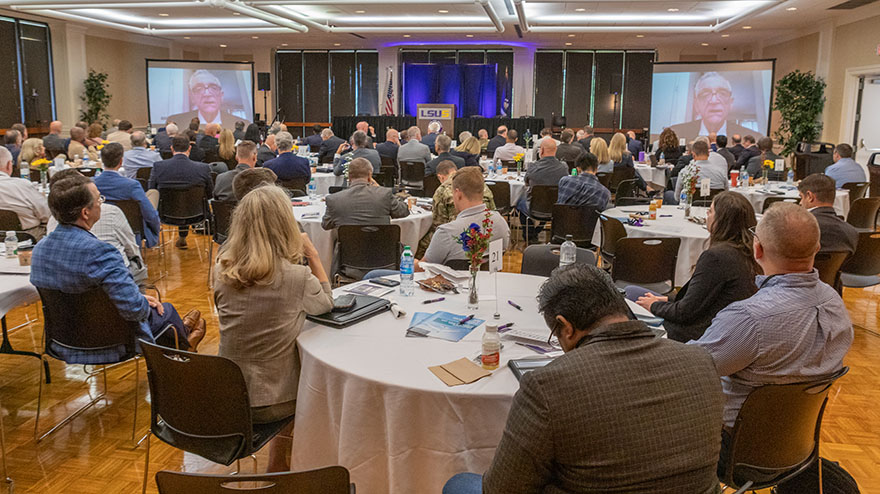The 24th Annual Nuclear Triad Symposium was held on the LSU Shreveport campus June 20th. Presented by the Hudson Institute, BRF and LSU Shreveport, this yearly gathering aims to address the United States’ challenges in pursuing the currently adopted modernization roadmap and related arms control and proliferation issues. The conference has a significant focus on the present and future strategic capabilities of Air Force Global Strike Command (AFGSC) located at nearby Barksdale Air Force Base.
According to (Ret.) Lt. Gen. “Bob” Elder and Hudson Institute Senior Fellow Peter Huessy, the reason for the Nuclear Triad Symposium is to get military officials and industry partners in the same room and on the same page. The two explained that when this gathering happens, plans and initiatives are created that rise to the current and future challenges of nuclear preparation.
Speakers included high-ranking Air Force officials, as well as private and education industry partners. The unclassified briefings highlighted the need to modernize the United States’ nuclear warhead capabilities. Military experts spoke on the known capabilities of Russian and Chinese forces, the US’s two largest threats in the nuclear space. Public policy experts echoed the sentiments, highlighting international unrest and strategic changes the two countries have already implemented in obvious efforts to outpace the United States.
Morning speakers highlighted the US’s need for faster military modernization, citing verified exponential growth by both China and Russia in aircraft and weaponry production. The US’s infrastructure, once a global powerhouse, has fallen behind in comparison to that of its counterparts. China, as explained at the symposium, can build new aircraft at a much faster pace, due to differing government structures and resources. Major General Mark Pye, Director of Global Power Programs, Office of the Assistant Secretary of the Air Force for Acquisition, Technology and Logistics, emphasized the need to build the next generation workforce in order to meet demands.
“The opportunity for professional movement must increase across the military, industry and higher education. We’ve got to connect with the younger generation, help connect them to this national security profession, and empower them. We need their perspective to move forward.
After lunch, workforce development discussions continued. A panel of defense contractors echoed the Major General’s comments, highlighting the need for a qualified workforce to meet the country’s modernization directives. Colonel Bridget McNamara and Major General Michael Lutton of the 8th and 20th Air Force respectively, both emphasized their need for additional personnel, while discussing their current inventory assets and needs. Vice Admiral Johnny Wolfe, Jr., Director for Strategic Systems Programs at the Naval Support Activity Crane, referenced the partnerships their installation has developed with local higher education institutions to troubleshoot workforce and asset development issues.
To round out the day, Major General Kenneth Eaves reminded the crowd how important the Air Force Global Strike Command’s mission is to ensure the Russian and Chinese threats are neutralized, hammering home the points all speakers brought forth throughout the day.


